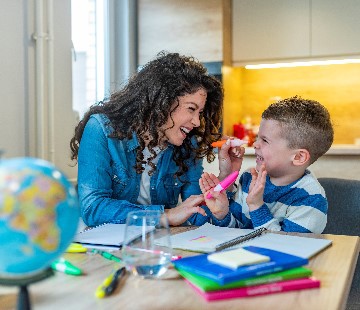Supporting language learning at home
 If your child is in primary school, you will be aware that they are now learning a first additional language, such as French, Spanish, German, Italian, Gaelic, or Mandarin. This is known as the L2 (Language 2).
If your child is in primary school, you will be aware that they are now learning a first additional language, such as French, Spanish, German, Italian, Gaelic, or Mandarin. This is known as the L2 (Language 2).
Older learners in primary schools, that is, children in P5-P7, may have been learning a second additional language, which could be almost any language. This is known as the L3 (Language 3). Children learn this L3 in addition to their L2.
This earlier start to language learning marks a change in the way in which languages are taught in primary schools, based on the Scottish government’s languages policy.
PDF file: Language Learning in Scotland : A 1+2 Approach
In secondary schools, all young people are entitled to learn an L2 until the end of S3 and can continue with their language learning into the senior phase, where they can take National Qualifications and/or SQA Awards in the language(s) they have been studying.
You can support your child’s language learning by reinforcing the message that learning a language takes time – with plenty of repetition and practice being the keys to success!
With that in mind, you can support your child’s language learning in the following ways:
- If you know any of the language(s) your child is learning, practise conversations with them in the target language (the language they are learning). NB if you need to brush up on pronunciation, there are resources available:
ZIP file: Audio files in French, Spanish, German, Italian, Gaelic and Mandarin (with some classroom-based vocabulary/phrases) - Ask your child to teach you something in the target language - and allow them to correct you!
- Try changing the language settings on shows on Netflix etc. Most shows/films are available in multiple languages - your child won’t find it difficult to follow shows they already know in another language. Or, watch films in the target language, but with the English subtitles on – and vice versa!
- Research with your child and/or encourage your child to research for themselves some of the similarities and differences between our culture and customs in Scotland with those in other countries. A good starting point for this is to look at how festivals are celebrated, for example Christmas, Easter and birthdays.
- For further information on how you can support your child’s language learning at home, take a look at this leaflet for parents, which includes information on the benefits of language learning.
- If your child is in primary school, it might be helpful for you to see a very broad overview of the national expectations for learning languages by P1-P7 stages:
PDF file: Building and developing language skills : expected outcomes for L2 from a Primary 1 start
